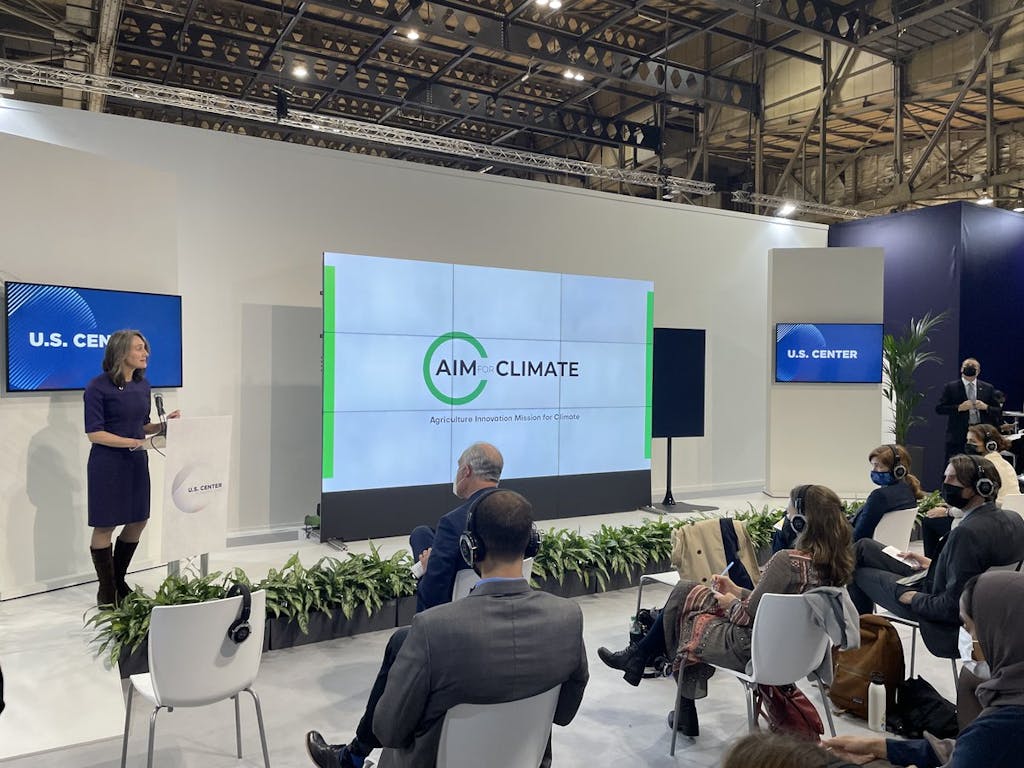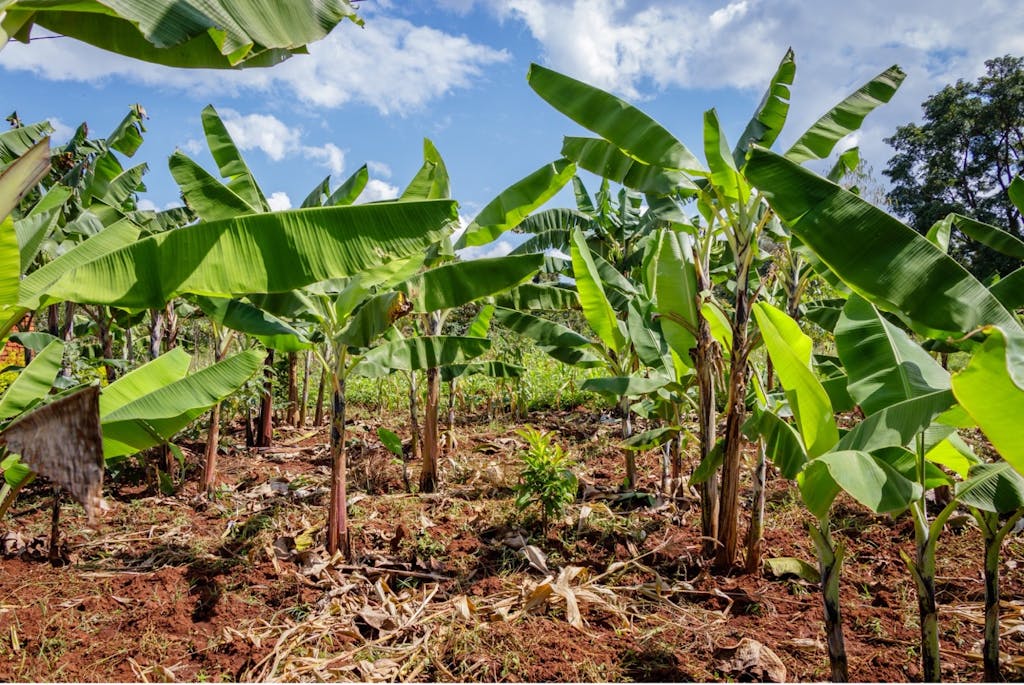Our agriculture and food systems are under threat from climate change and are also a major source of global greenhouse gas emissions. But it doesn’t have to be this way. Changing how we produce and consume food can deliver powerful climate solutions. But we need robust investment in the innovation it will take to get us there.
As the world struggles to contain the COVID-19 pandemic and respond to extreme weather events, the cracks in the global food system are widening. The food security and livelihoods of millions of people are at risk. Sparked by the UN Secretary-General’s Food Systems Summit in September and fueled by COP26 in November, transformation of our agricultural and food systems is gaining ground in international climate conversations. But those discussions cannot be complete unless they include the transformative potential of innovation — the critical ingredient for renovating the way we produce, distribute, and consume food around the world.
Agriculture Research & Development: The Case for Investment
The return on investment (ROI) for agricultural research and development (R&D) has historically been very high. For example, international agricultural research centers have a 10-to-1 ROI, which means a tenfold increase in benefits to producers and consumers for every dollar invested. Investing in agricultural research and development also contributes to several UN Sustainable Development Goals (SDGs), especially when it comes to combating climate change impacts (SDG 13) on food production (SDG 2).
And yet, despite the clear investment case, R&D makes up only 6% of the money governments spend on agriculture — a modest amount that, unfortunately, is declining in many countries. In fact, the Commission on Sustainable Agriculture Intensification has estimated that the Global South has an R&D finance gap of $15.2 billion per year, hindering the ability to achieve our hunger and climate goals by 2030.
A New Initiative Helps Fill the Innovation Investment Gap
Against this backdrop, 35 governments and 50 nongovernmental partners from around the world announced an initiative called the Agriculture Innovation Mission for Climate (AIM for Climate), which commits participating countries to significantly increase agricultural R&D during the 2021-2025 period. Introduced by the United States and United Arab Emirates, which have both made major R&D funding pledges, AIM for Climate is building momentum for transformative investments that empower the agricultural sector to reduce greenhouse gas pollution and build resilience to climate impacts, while delivering on equity and other global sustainability goals.
A surge in investment by governments and their partners in agricultural R&D would reinvigorate the existing food system research infrastructure. Across developing nations, the One CGIAR initiative is uniting the capacity of 15 research centers to deliver agricultural innovation faster, more broadly, and at lower cost. But it needs substantial and consistent funding to meet this mandate.
What should we expect from an effort like AIM for Climate and a potential “boom cycle” for agricultural R&D? For countries that built a deep bench of research capacity in the 20th century, reversing the investment decline of recent years would enable their agricultural sectors to reduce greenhouse gas emissions while inoculating against rising climate change impacts. Middle-income countries, which have become the largest public investors in agricultural R&D, would continue their progress toward robust innovation in agriculture, but at a faster pace. For lower-income countries, especially where agriculture is a major source of GDP, the clear opportunity is to build out their own innovation capacity to support a national pathway to climate-resilient economic prosperity.

UN Foundation President and CEO Elizabeth Cousens speaks at an AIM for Climate launch event on November 6, 2021, at the U.S. Center during COP26 in Glasgow. Photo: Megan Rabbitt / UN Foundation
Agricultural Innovation Takes Many Forms
Although we have a globalized food system, agriculture looks very different as you travel around the world. But climate change is disrupting agriculture of all types — whether a small family farm or a massive corporate-run operation — in every corner of the world. As agricultural priorities shift from maximizing production to optimizing for climate resilience, innovation is our most important strategy, and we should ensure that our focus reflects the needs of countries on the front lines of climate change.
Innovation takes many complementary forms and — perhaps more important than any specific innovation — robust, in-region research engines can be the source of multifaceted solutions to complex challenges. To deliver improved productivity, efficiency, diversification, equity, and transparency, we need to harness the power of many sources of innovation. These include the following:
- Technological breakthroughs drove the food security gains of the past half-century and will be necessary for coping with a changing climate and reducing agriculture’s greenhouse gas footprint.
- Policy and financial innovations incentivize adoption of improved technologies and practices that can boost agri-food system productivity, sustainability, and profitability while stabilizing agriculture-dependent rural communities and global food supplies.
- Market-led and consumer-facing innovation of agri-food system infrastructure is needed at all scales — from local to global — to reduce food loss and waste, dramatically increase efficiency, and ensure equitable access to nutritious food.
- Rapid innovation in data and analytics has sparked major changes in some agri-food systems, but others need investment to leverage capacities toward greater inclusion and sustainability.

Bananas growing in Uganda. Bananas are a nutritious food security crop in Africa and elsewhere.
Photo: Dennis Wegewijs /iStock
Looking Ahead: The Long-Term Value of Agricultural Innovation
As countries heed the AIM for Climate call, how will we know that this five-year surge in R&D funding is truly transformative? To answer this question, we can look back at high-impact innovations arising from earlier research. We can also assess the bang that we get for our R&D buck by tracking the resulting social and environmental benefit against the amount of money invested, the inputs and land used for production, and the number of people in need.
Solving the climate crisis and achieving the SDGs cannot be done without transforming agri-food systems. To do so, we need robust R&D and innovation to fuel national strategies that respond to changing climate and we need to ensure food and nutritional security while benefiting all agri-food system actors. Public investment will be essential to stimulating complementary private sector R&D and to supporting producers and the agricultural sector as a whole as they adapt, validate, and widely adopt sustainable practices and technologies.
R&D offers a huge opportunity to gain ground in the global fight against climate change. With sustainable food systems as the prize, we need to prioritize large-scale investment in innovation with the long term in mind.
During the spring of 2022, the UN Foundation convened a four-part webinar series showcasing the opportunity to develop innovation sprints that contribute to AIM for Climate goals.







